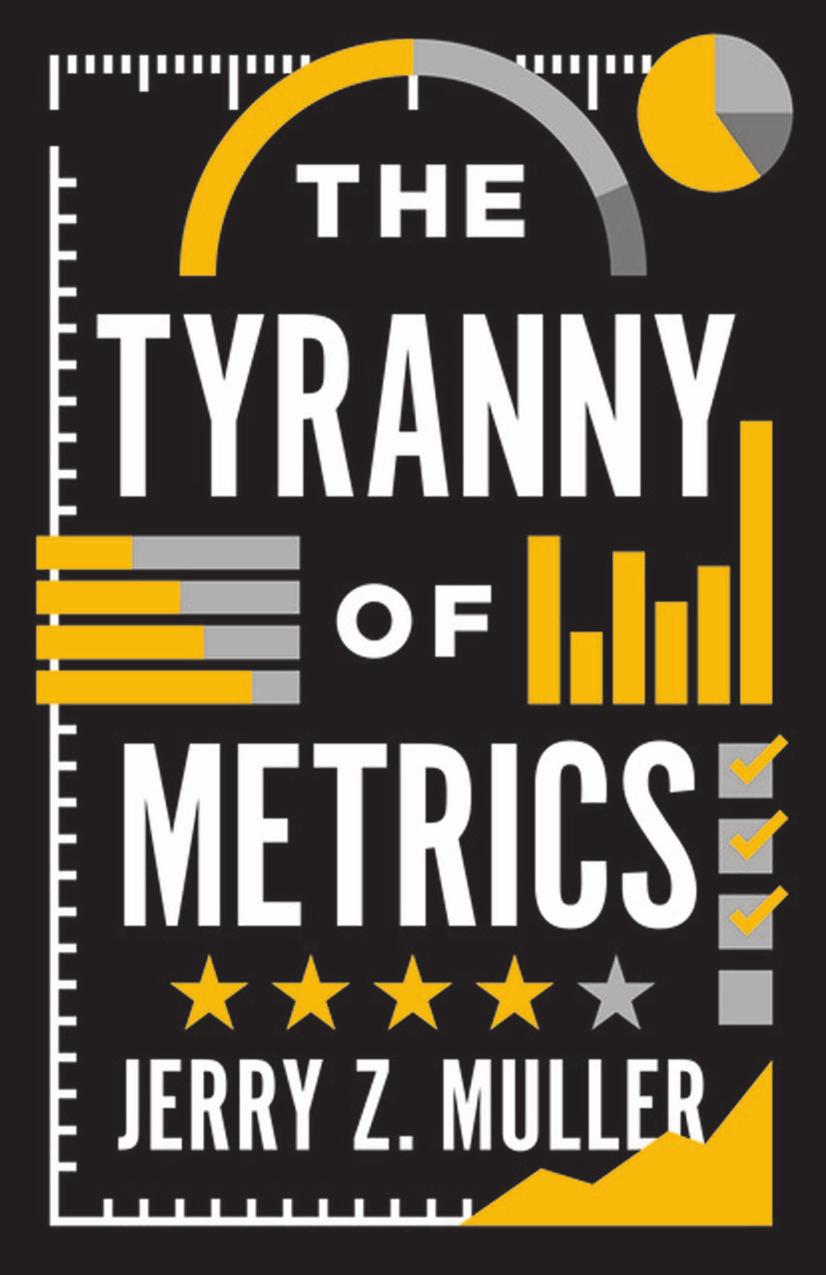The Tyranny of Metrics by Jerry Z. Muller

Author:Jerry Z. Muller
Language: eng
Format: epub, pdf
Publisher: Princeton University Press
Published: 2017-01-27T05:00:00+00:00
10
POLICING
Like medicine, policing has been transformed in recent decades by the use of metrics. Here too the stakes are high: the fate of cities rests in no small part on the public’s perception of its safety, and mayors often stake their reelection on their ability to control crime or to bring down the crime rate. When the public and its politicians think of public safety, they think of the police, who are held responsible for the level of crime. However, like health and its relationship to the medical system, or education and its relationship to the school system, public safety is only partially dependent on the effectiveness of the police. It depends in part on other elements of the justice system: on the public prosecutors, the judiciary, and the penal and parole systems. It depends in good part on the propensity of the local population to engage in criminal activity, and that in turn depends on broader economic, ethnic, and cultural factors.1 And public safety also depends on the ease of committing crime. Some of the decline in crime in recent decades is a product of private actions by property owners. The opportunity for car theft, burglary, and other crimes has been radically reduced by defensive measures undertaken by millions of private individuals, whose acquisition of improved car alarms and home alarms has made these crimes more difficult. In addition, there are about one million people employed by private security firms in the United States.
Violent crime has fallen in the United States since the early 1990s. Rightly or wrongly, much of that decline is commonly attributed to changes in policing. And the major change in policing has involved the increased use of metrics, above all in the form of Compstat. Here is a case where diagnostic metrics for internal use have proved genuinely useful. But then again, the use of publicly released metrics to bolster the reputations of politicians and police chiefs has also created incentives for gaming and fudging the numbers, and for counterproductive diversion of effort.
Compstat (which originally stood for “computer statistics”) is a crime analysis and accountability system, first developed by the New York Police Department in 1994. Pioneered under Police Commissioner William J. Bratton, Compstat uses Geographical Information Systems (GIS) to track the incidence of crime. It involves the collection, analysis, and mapping of crime data in a rapid time-frame to discover crime patterns, as well as entailing weekly meetings at which police managers are held accountable for the results in their precinct. The data are used to pinpoint hot spots in which crime is concentrated, and to deploy police resources accordingly. In the decades since it was rolled out in New York, some variation of Compstat has been adopted in many large American cities.2 Compstat does seem to have contributed to the decline in reported crime—and indeed, to the decline of crime itself.
Yet in city after city, there have been questions about the accuracy and reliability of crime statistics. Insofar as Compstat is a system of informational and indicative metrics, it seems genuinely useful.
Download
This site does not store any files on its server. We only index and link to content provided by other sites. Please contact the content providers to delete copyright contents if any and email us, we'll remove relevant links or contents immediately.
Weapons of Math Destruction by Cathy O'Neil(5335)
Cracking the GRE Premium Edition with 6 Practice Tests, 2015 (Graduate School Test Preparation) by Princeton Review(3703)
What It Really Takes to Get Into Ivy League and Other Highly Selective Colleges by Hughes Chuck(3311)
Fooled by Randomness: The Hidden Role of Chance in Life and in the Markets by Nassim Nicholas Taleb(2566)
The Marketing Plan Handbook: Develop Big-Picture Marketing Plans for Pennies on the Dollar by Robert W. Bly(2533)
The Tyranny of Metrics by Jerry Z. Muller(2532)
Ultralearning by Scott Young(2422)
The Official Guide for GMAT Review 2015 with Online Question Bank and Exclusive Video by Graduate Management Admission Council (GMAC)(2401)
50 Economics Classics by Tom Butler-Bowdon(2176)
The Visual MBA by Jason Barron(1711)
The Inevitable by Kevin Kelly(1611)
Data Science for Business by Foster Provost & Tom Fawcett(1573)
Out of the Crisis by Deming W. Edwards(1565)
GMAT Official Guide 2018 Verbal Review by GMAC (Graduate Management Admission Council)(1452)
Cracking the LSAT, 2012 Edition by Princeton Review(1422)
The Conflict Resolution Phrase Book by Barbara Mitchell & Cornelia Gamlem(1408)
The Personal MBA: Master the Art of Business by Josh Kaufman(1365)
Maths and Stats for Web Analytics and Conversion Optimization by Himanshu Sharma(1343)
College Essays that Made a Difference by Princeton Review(1319)
